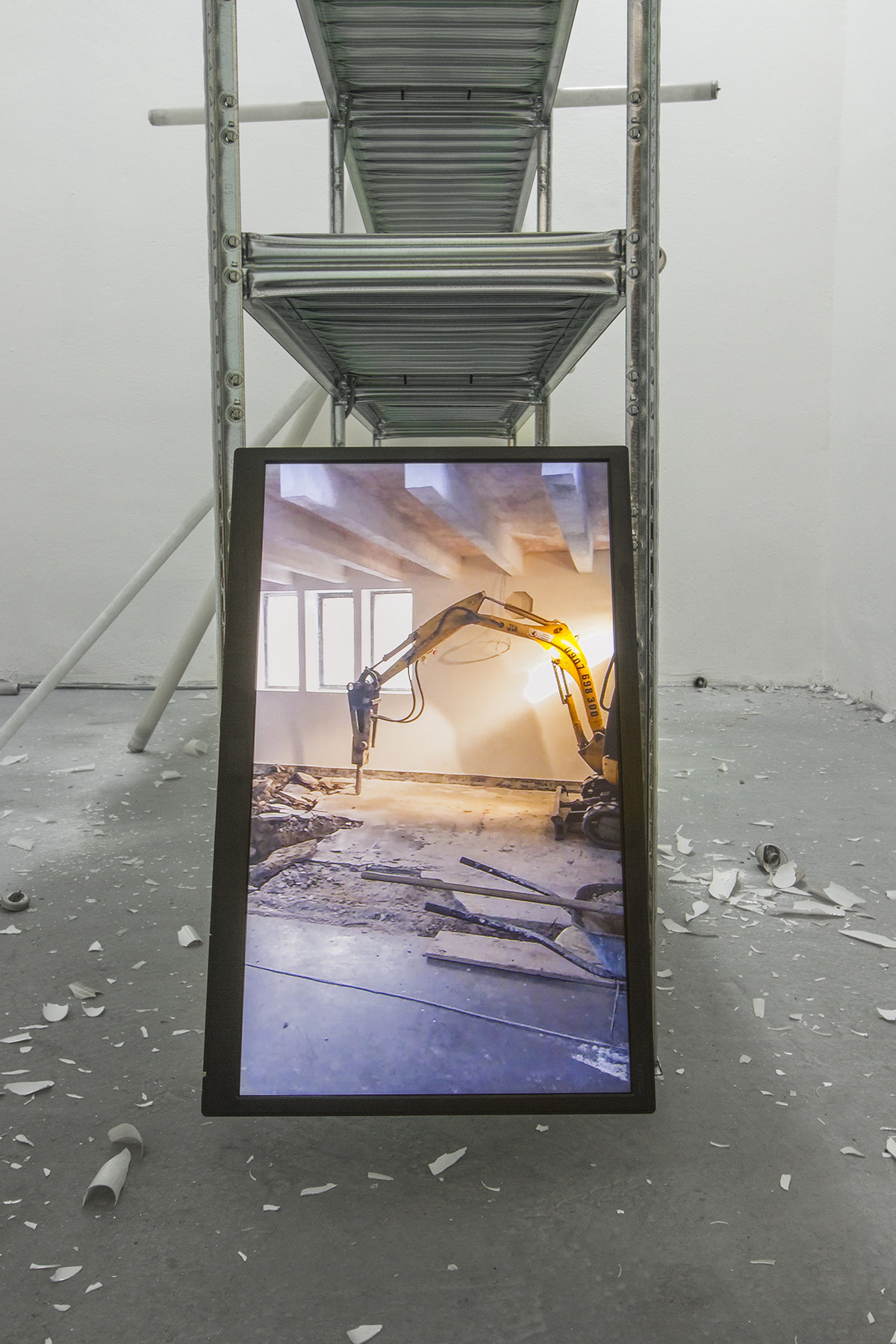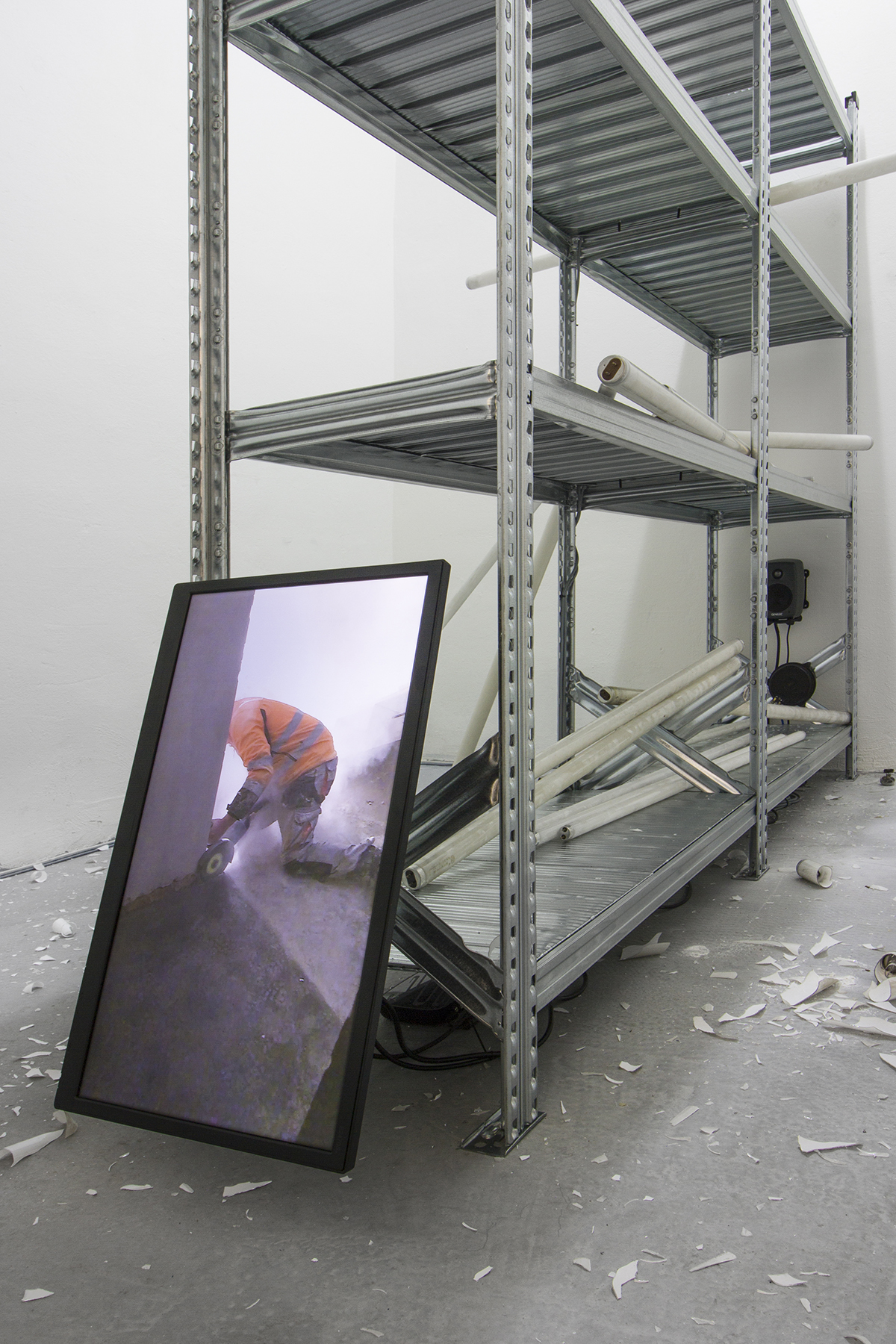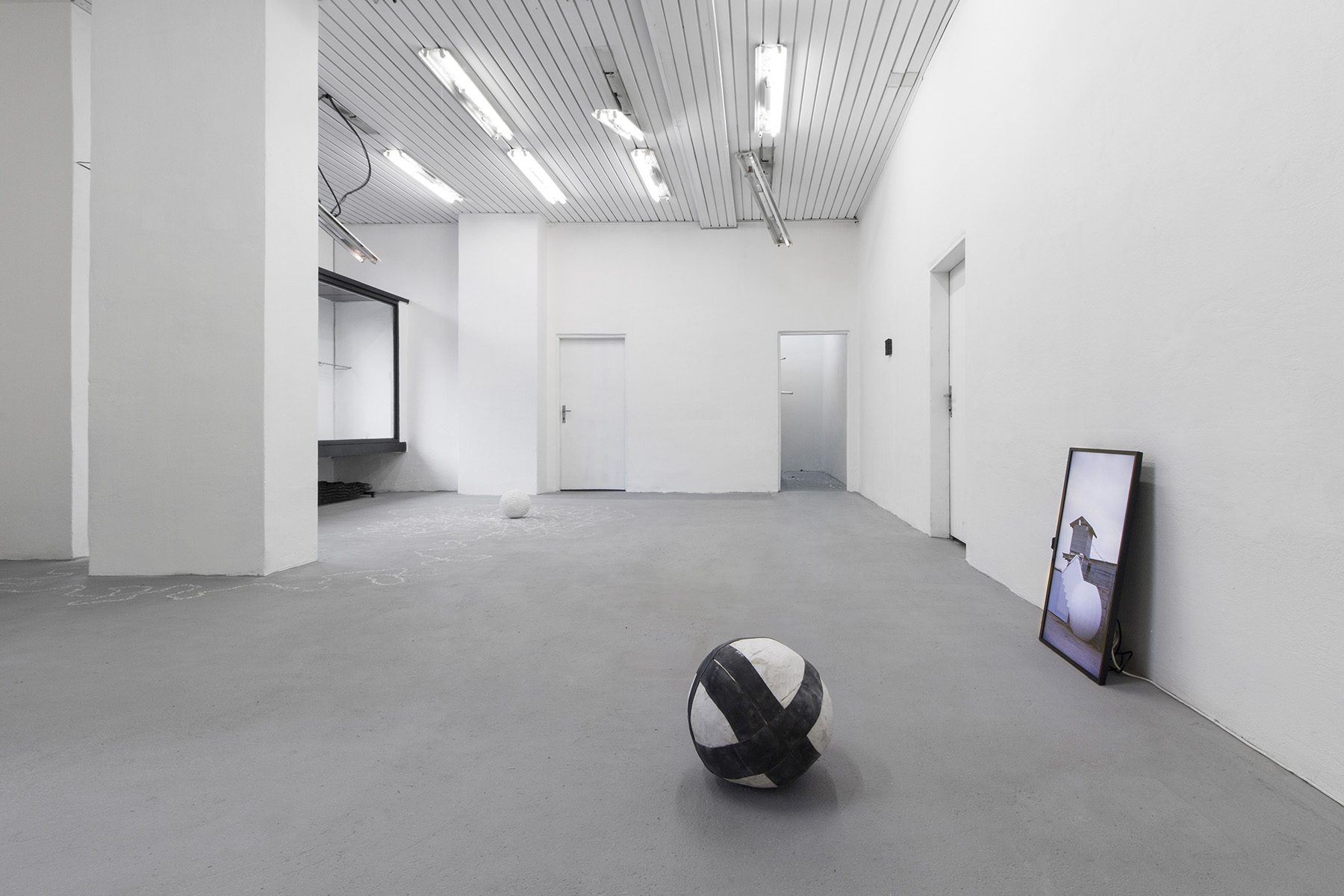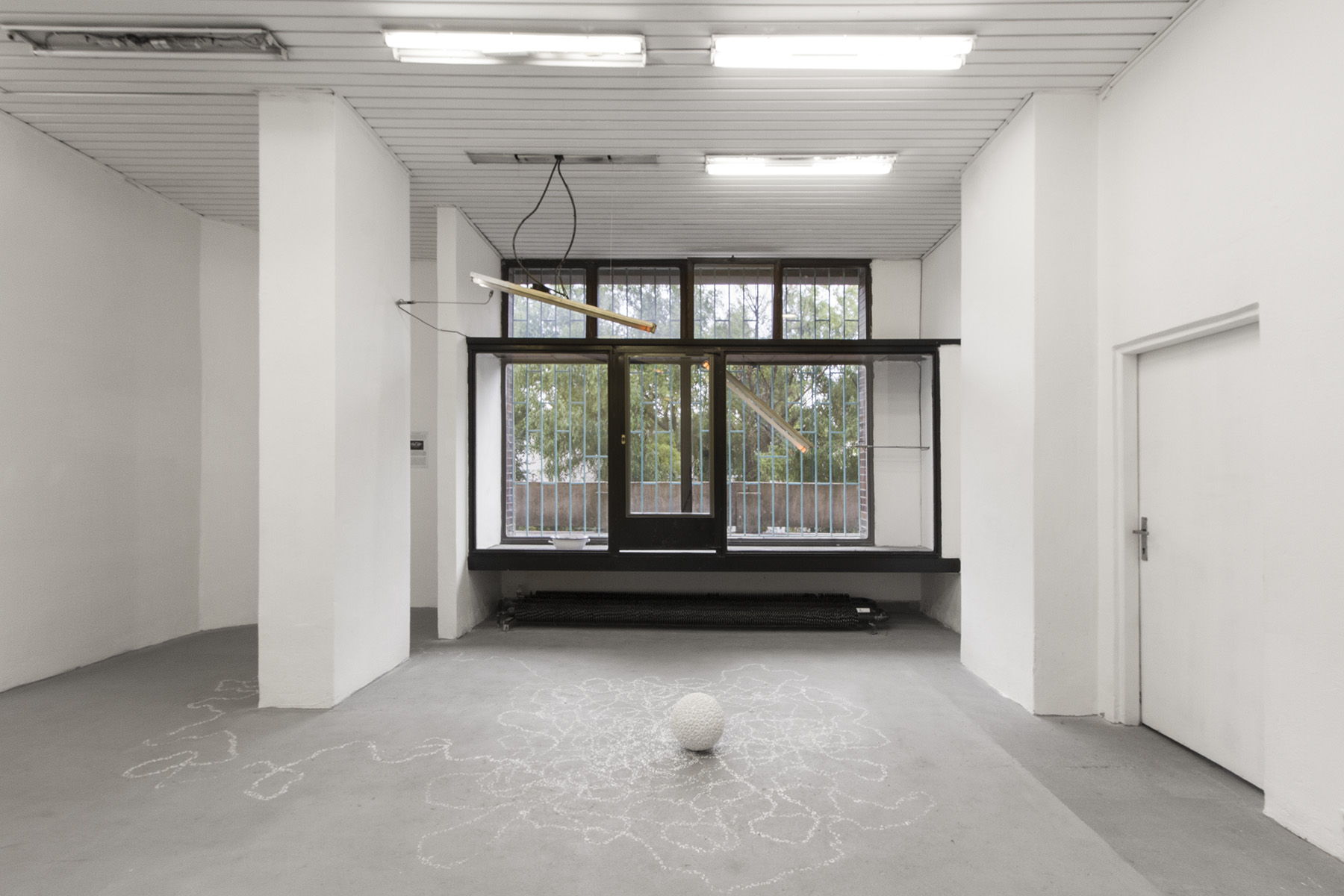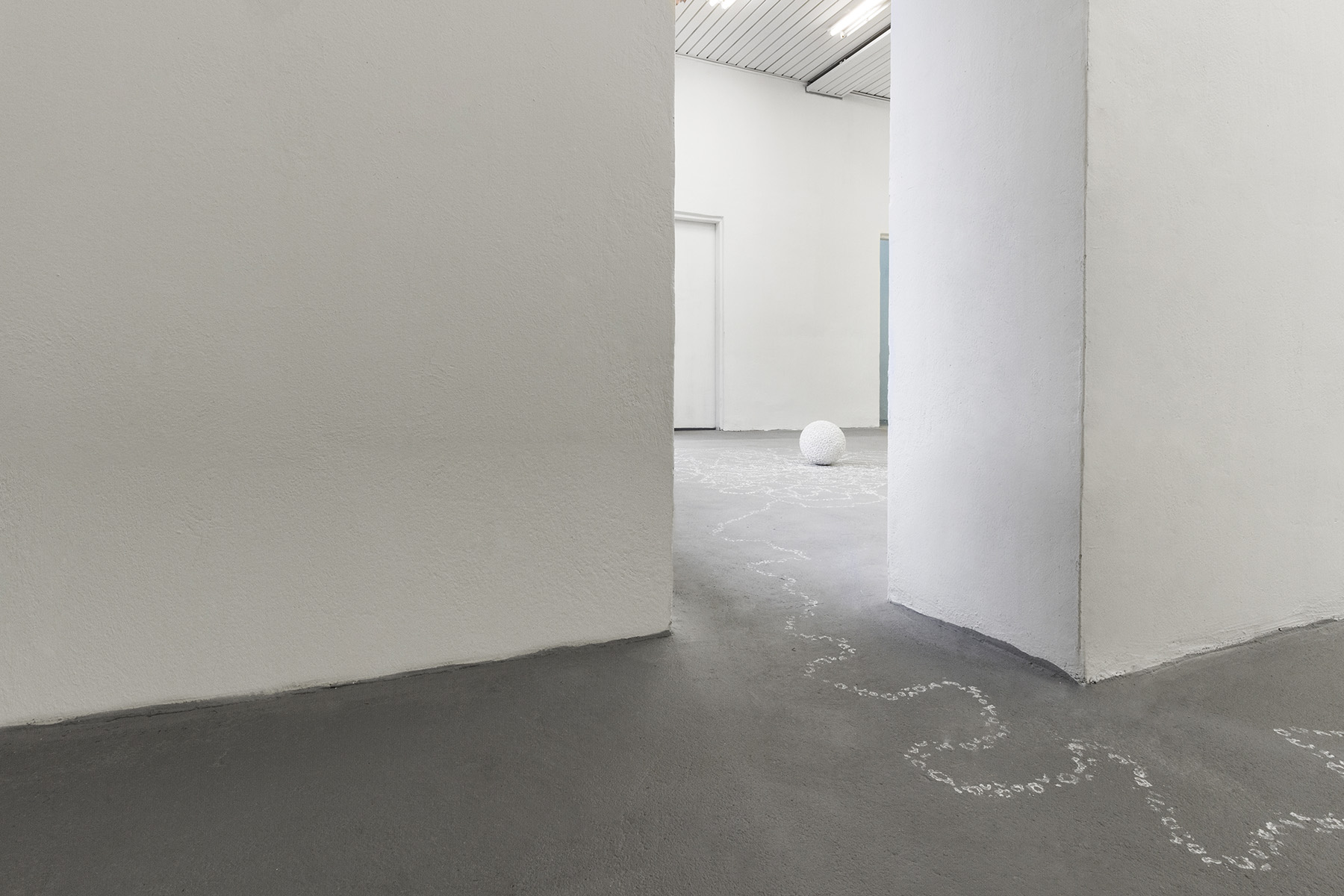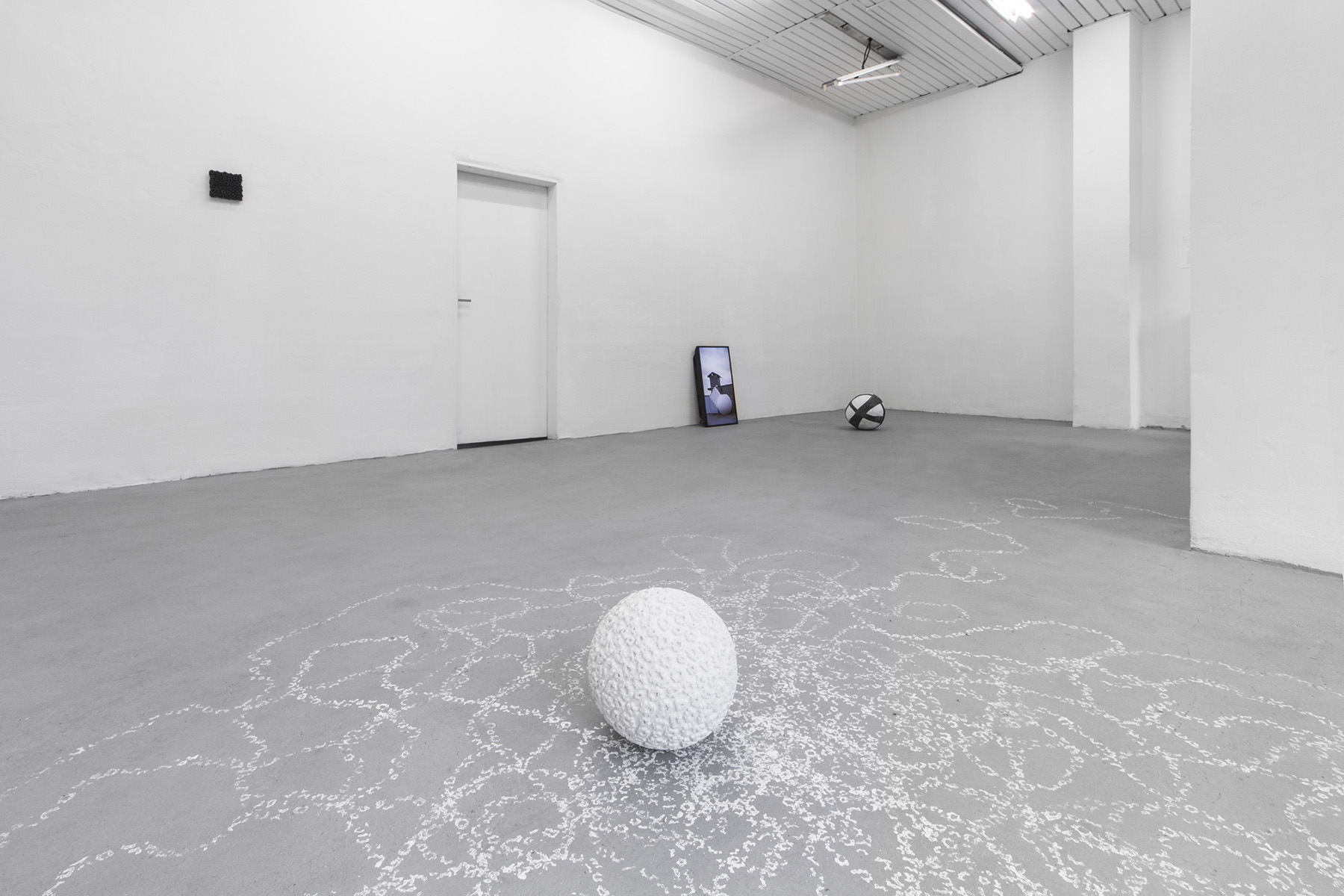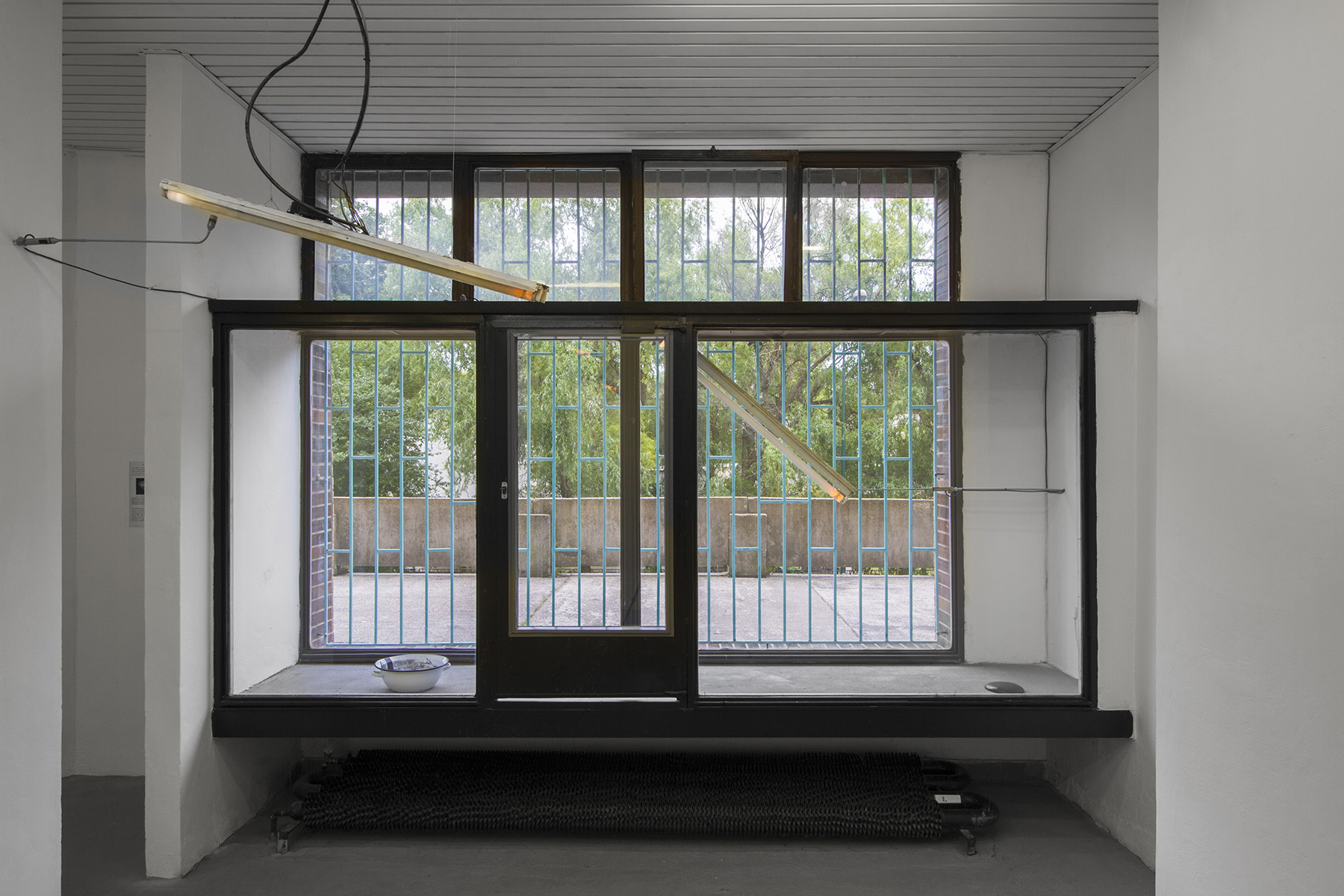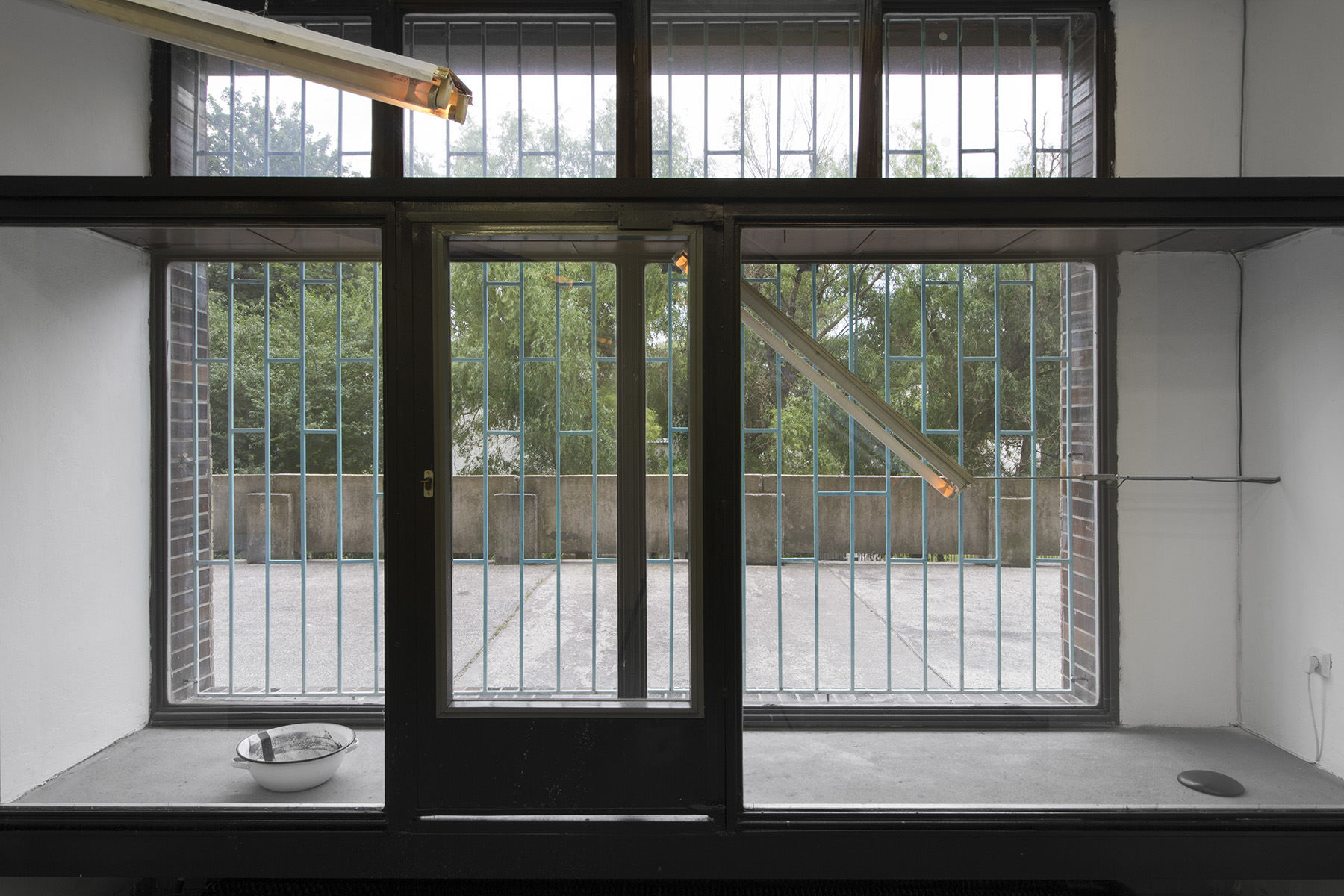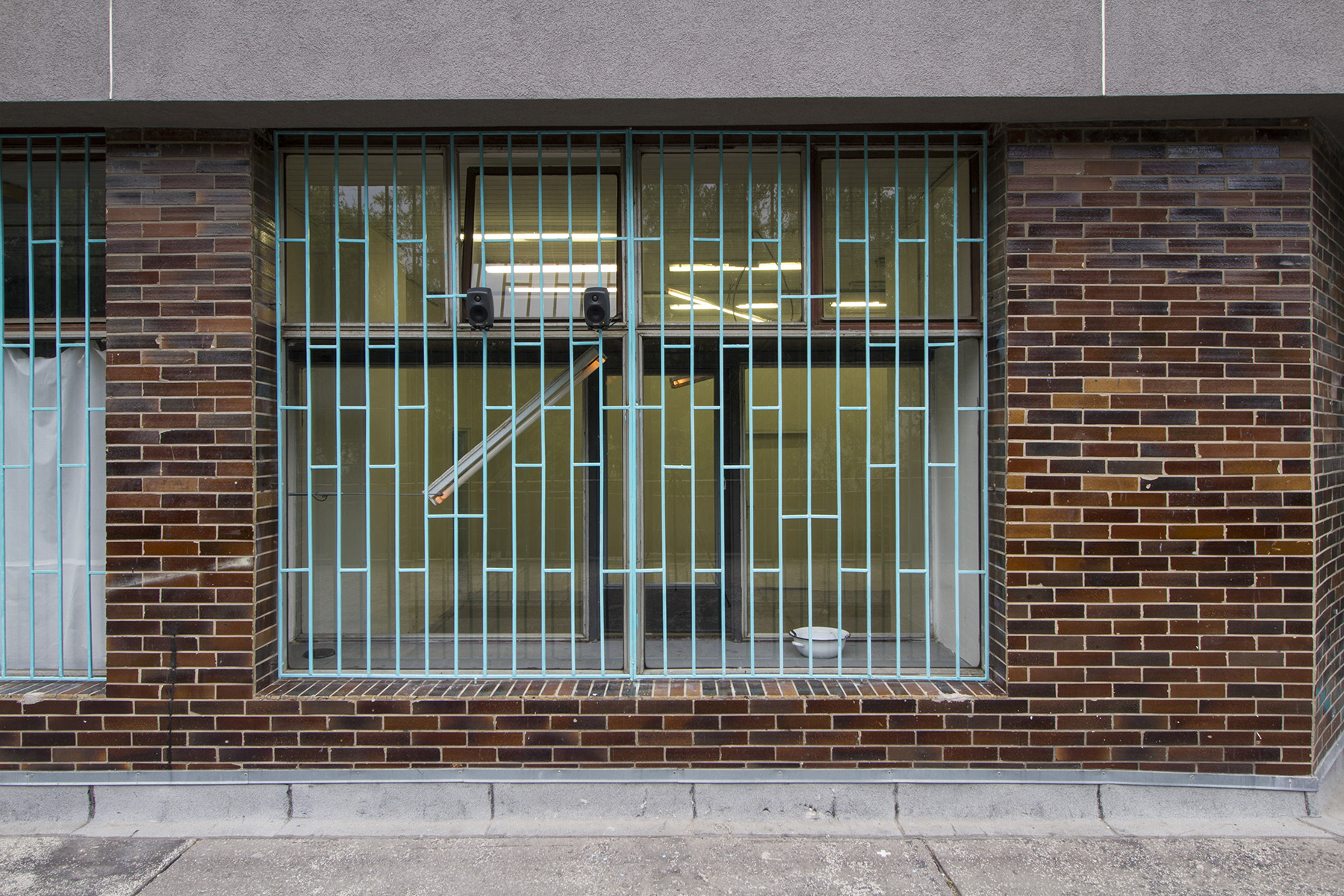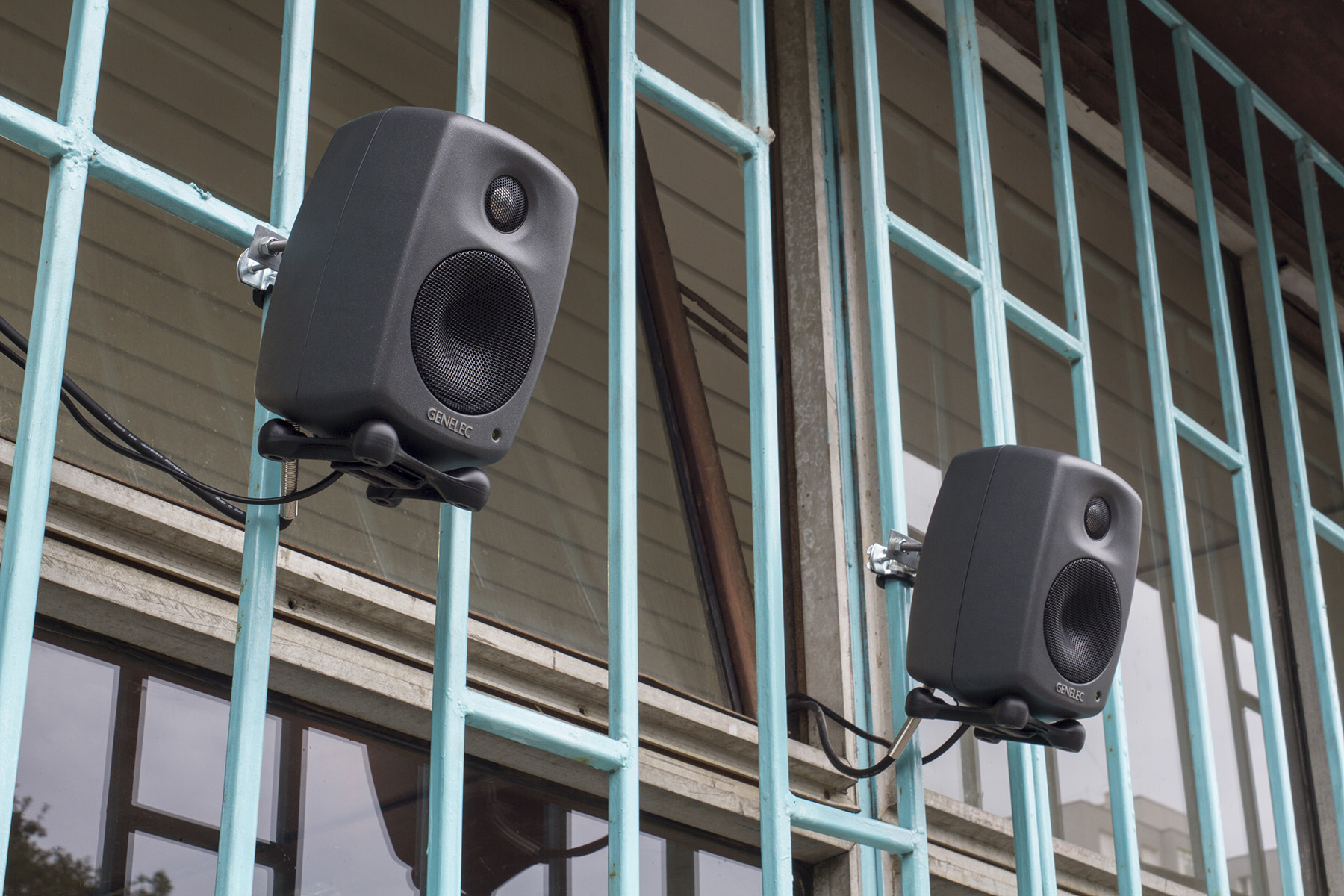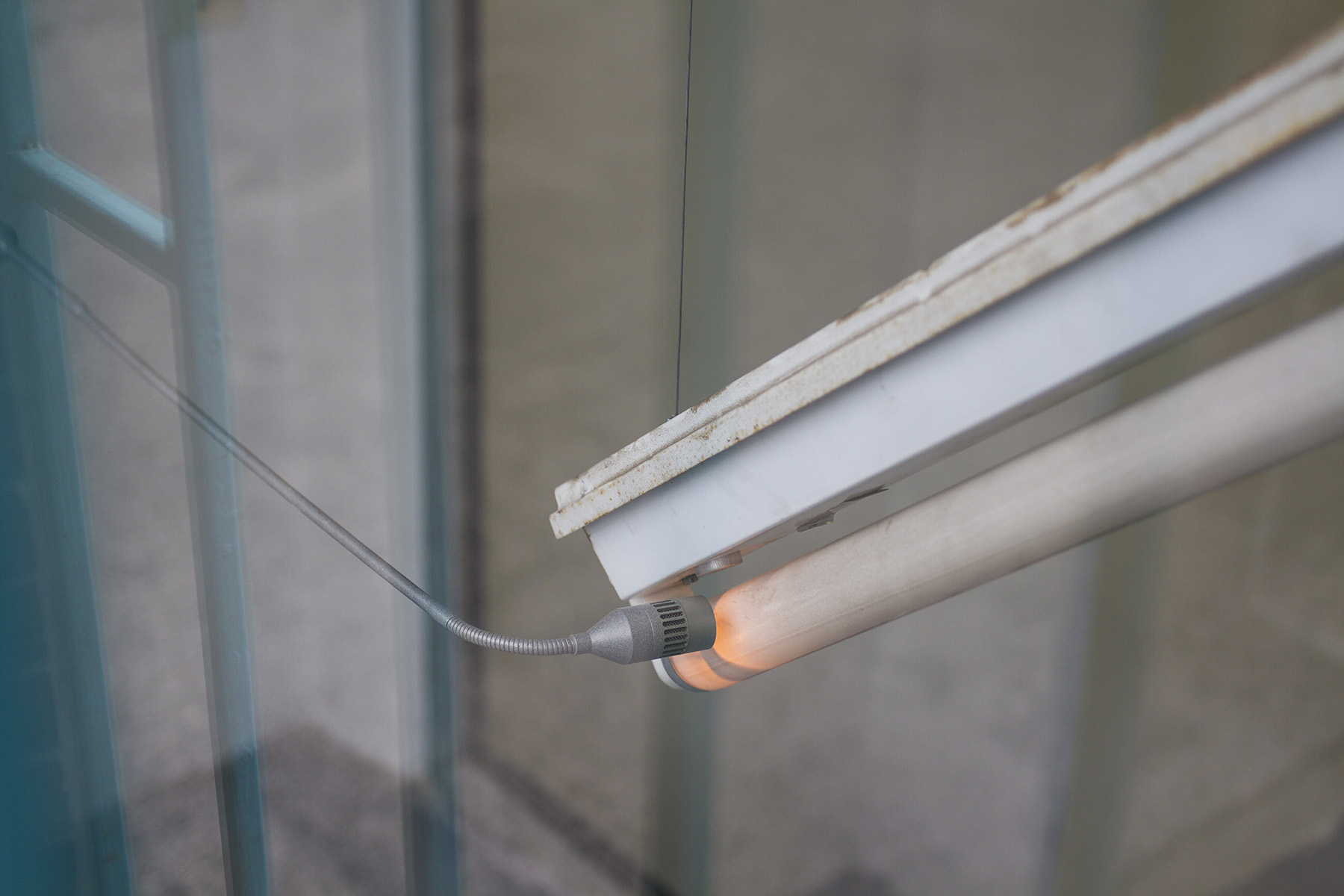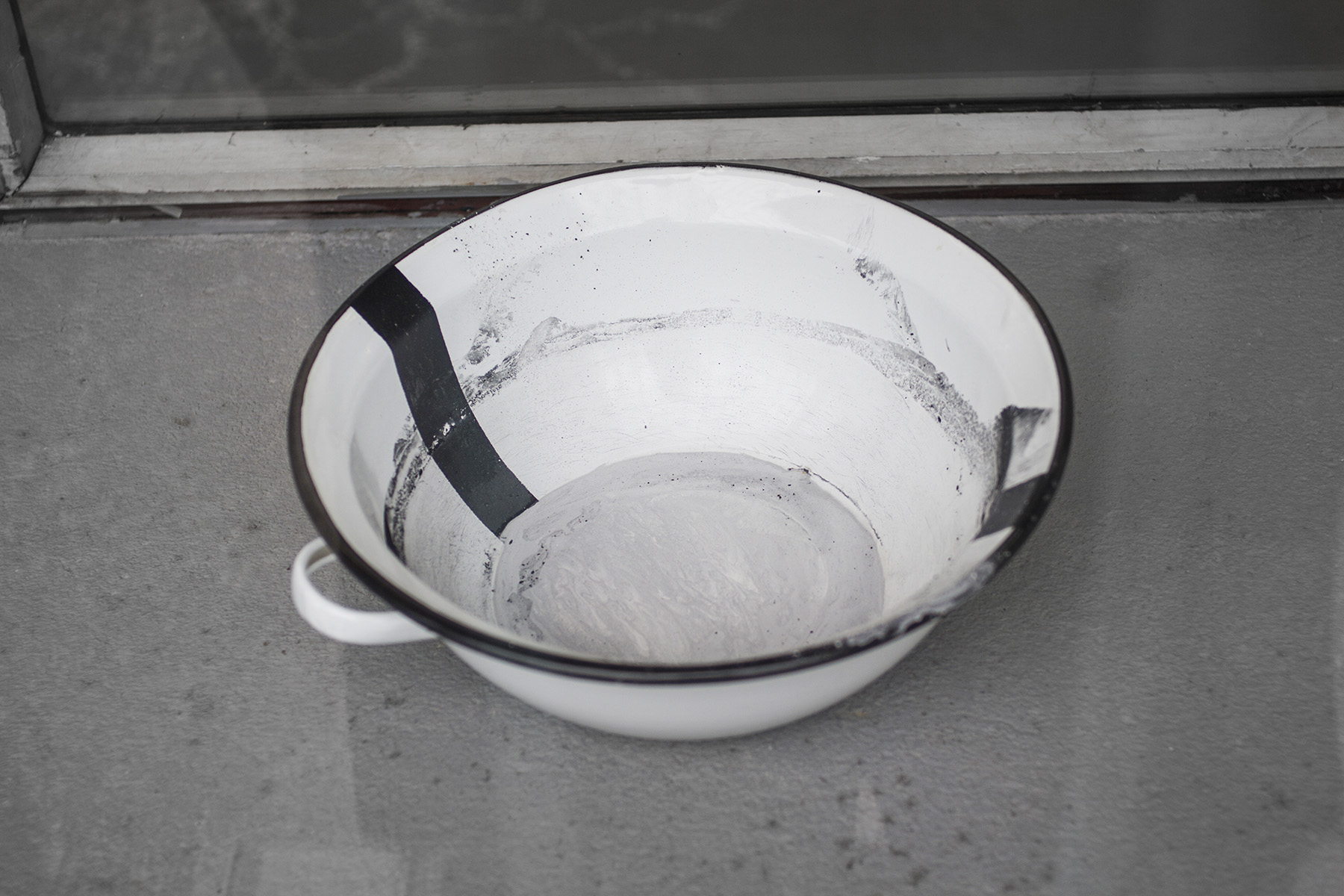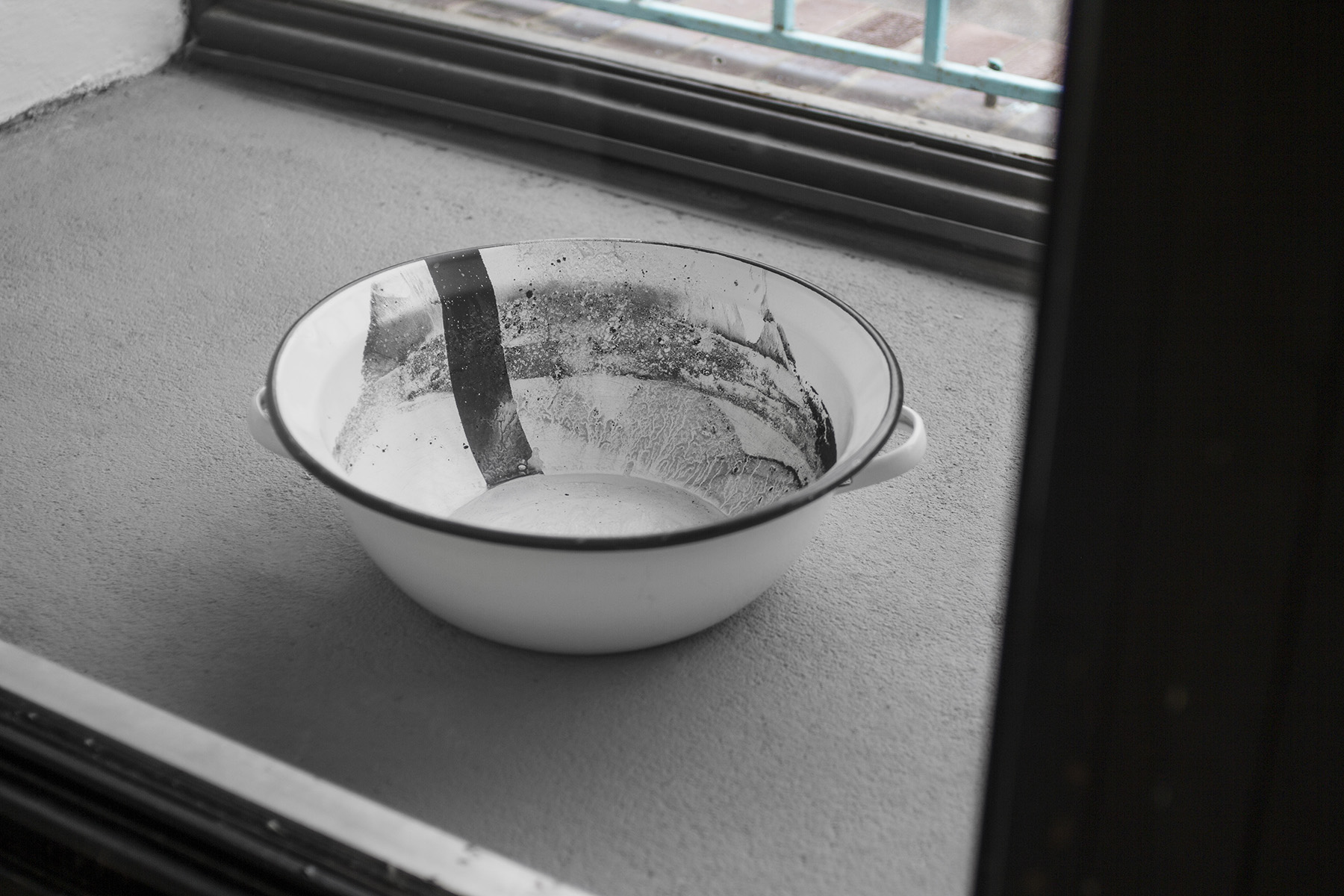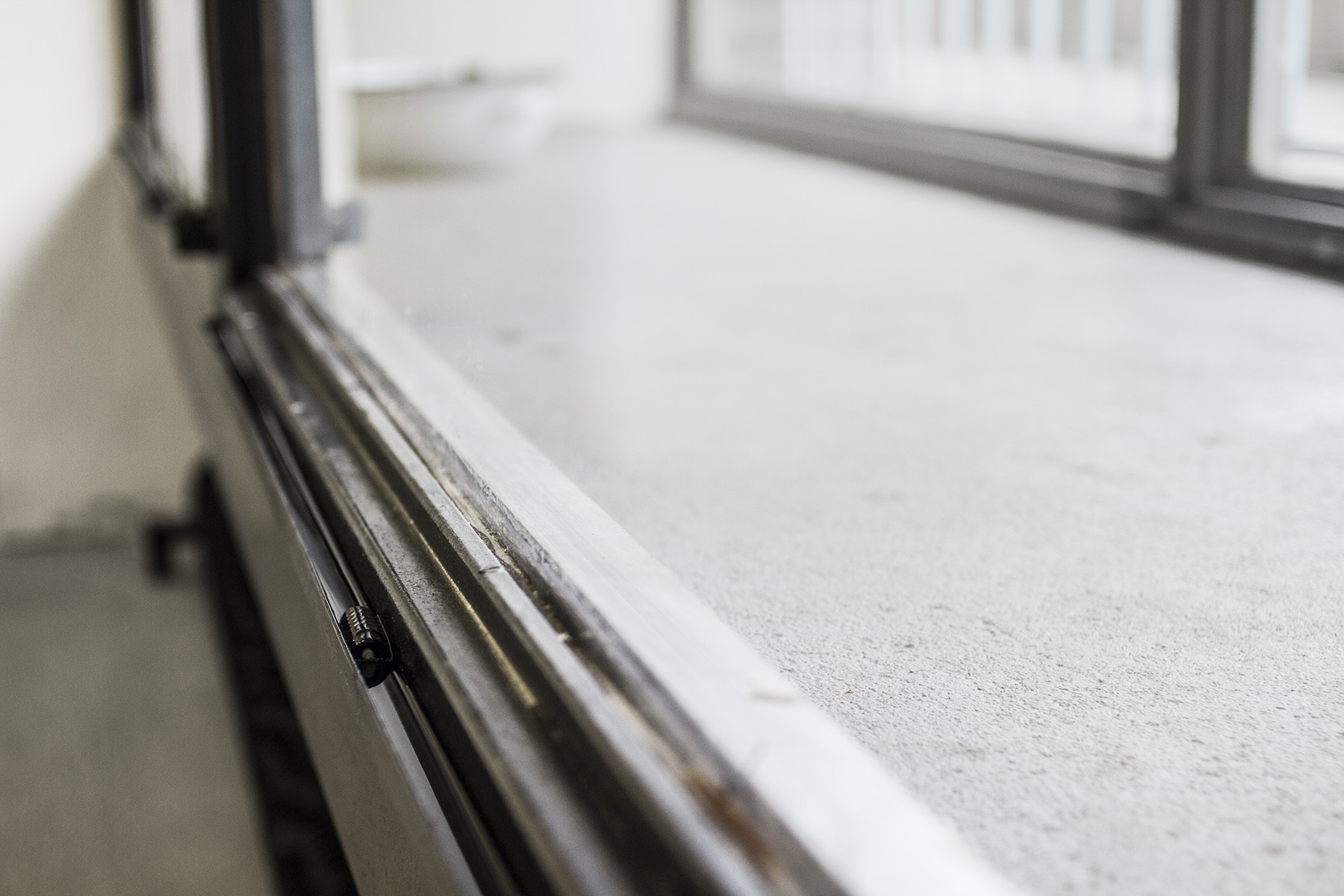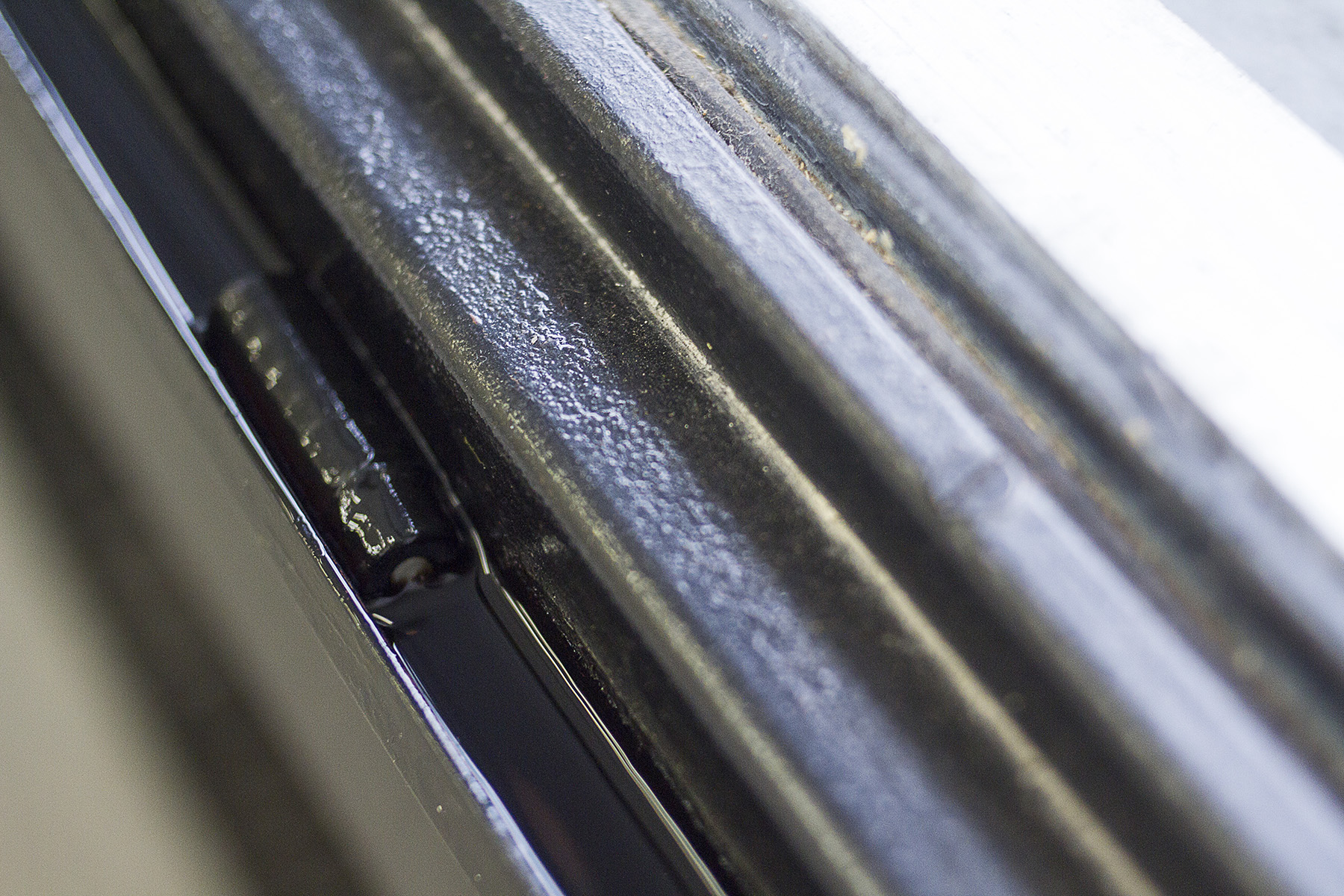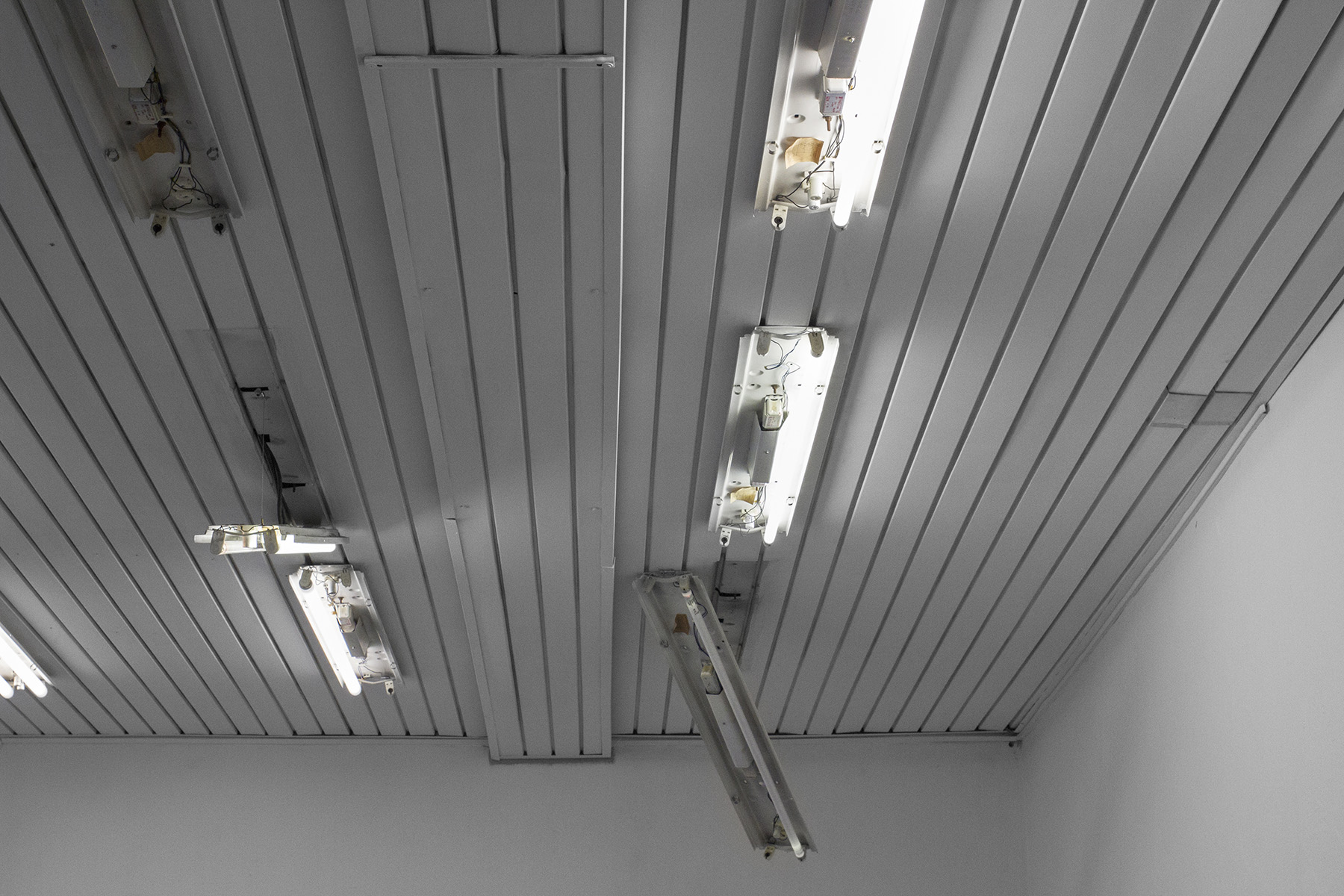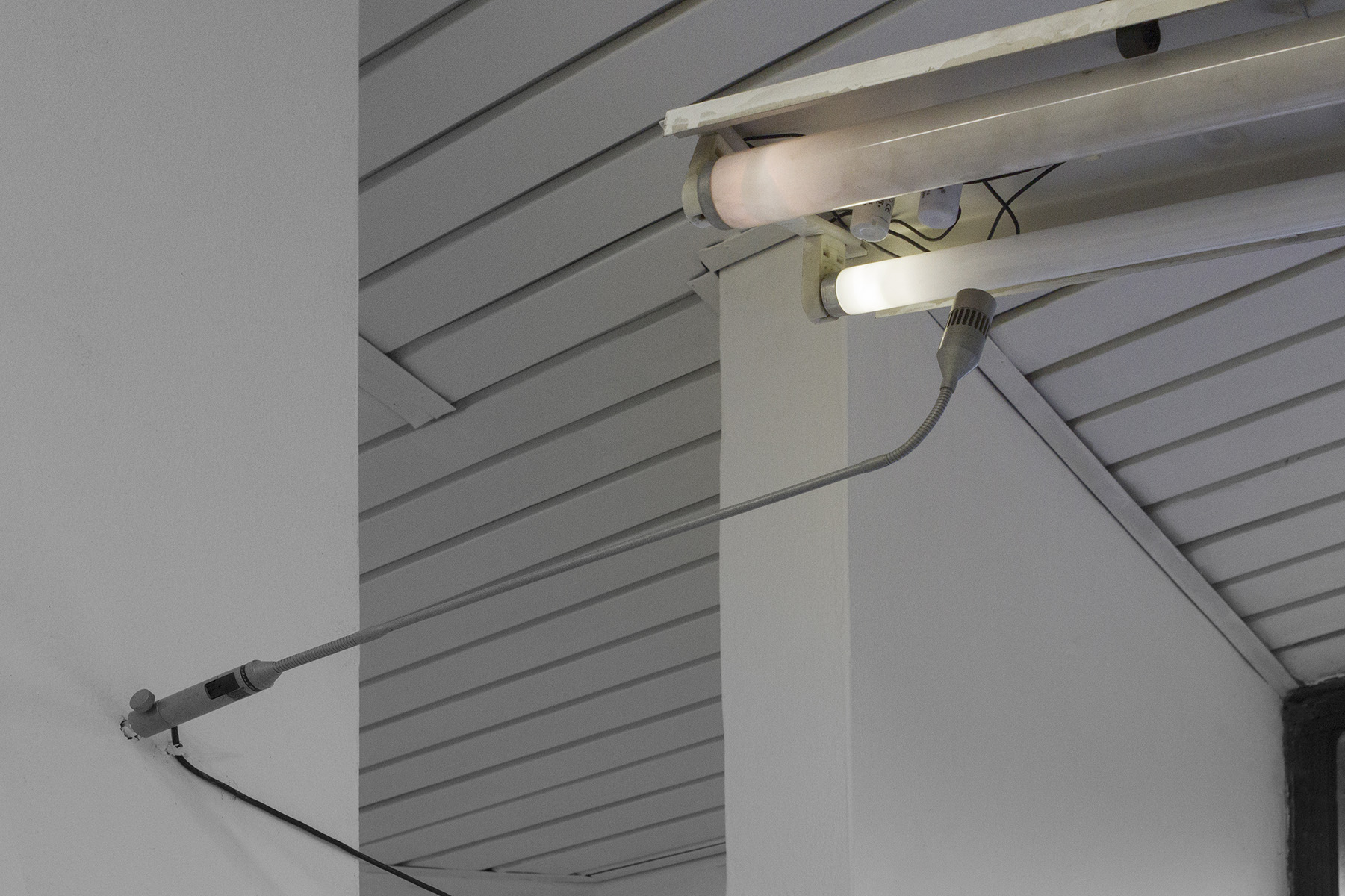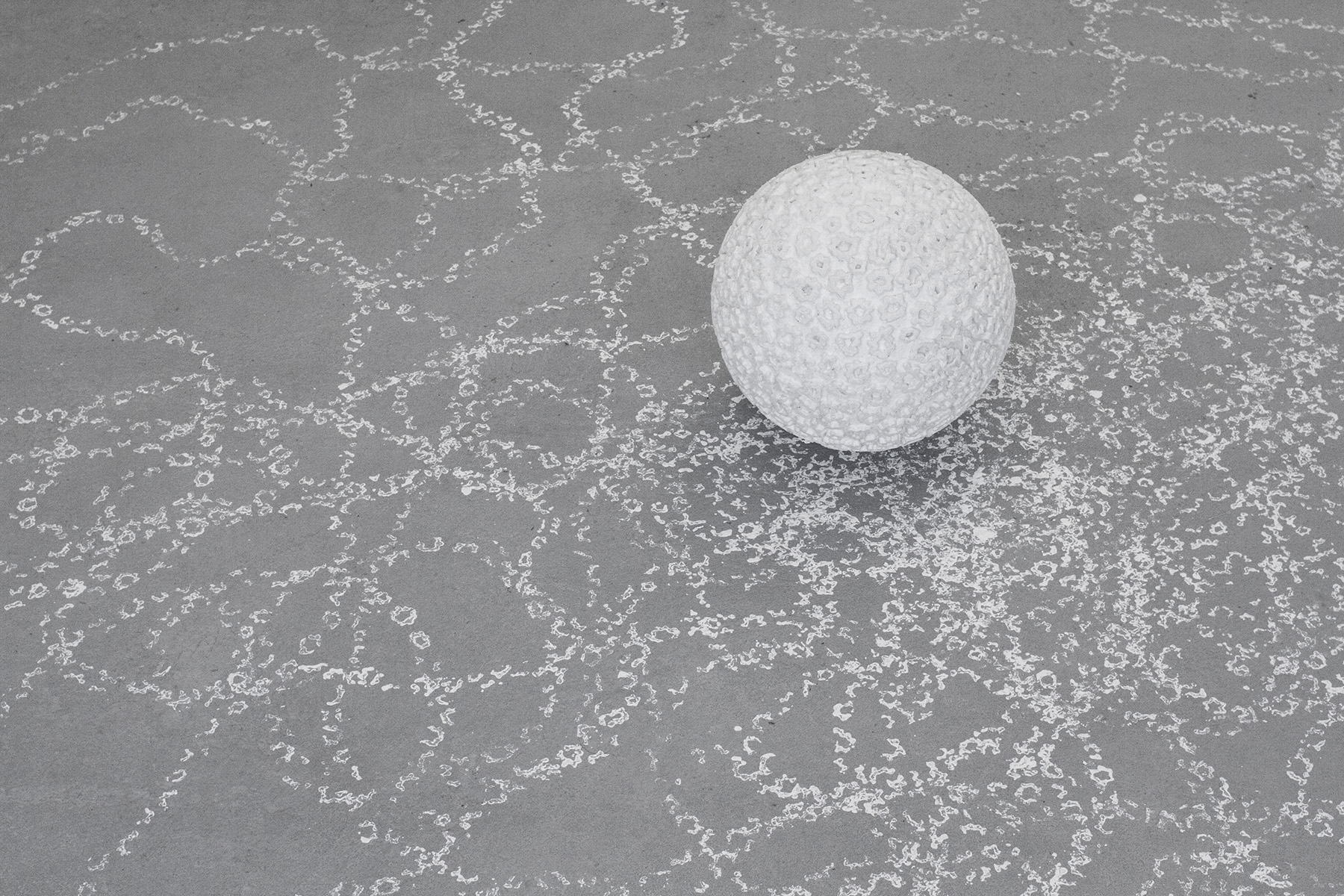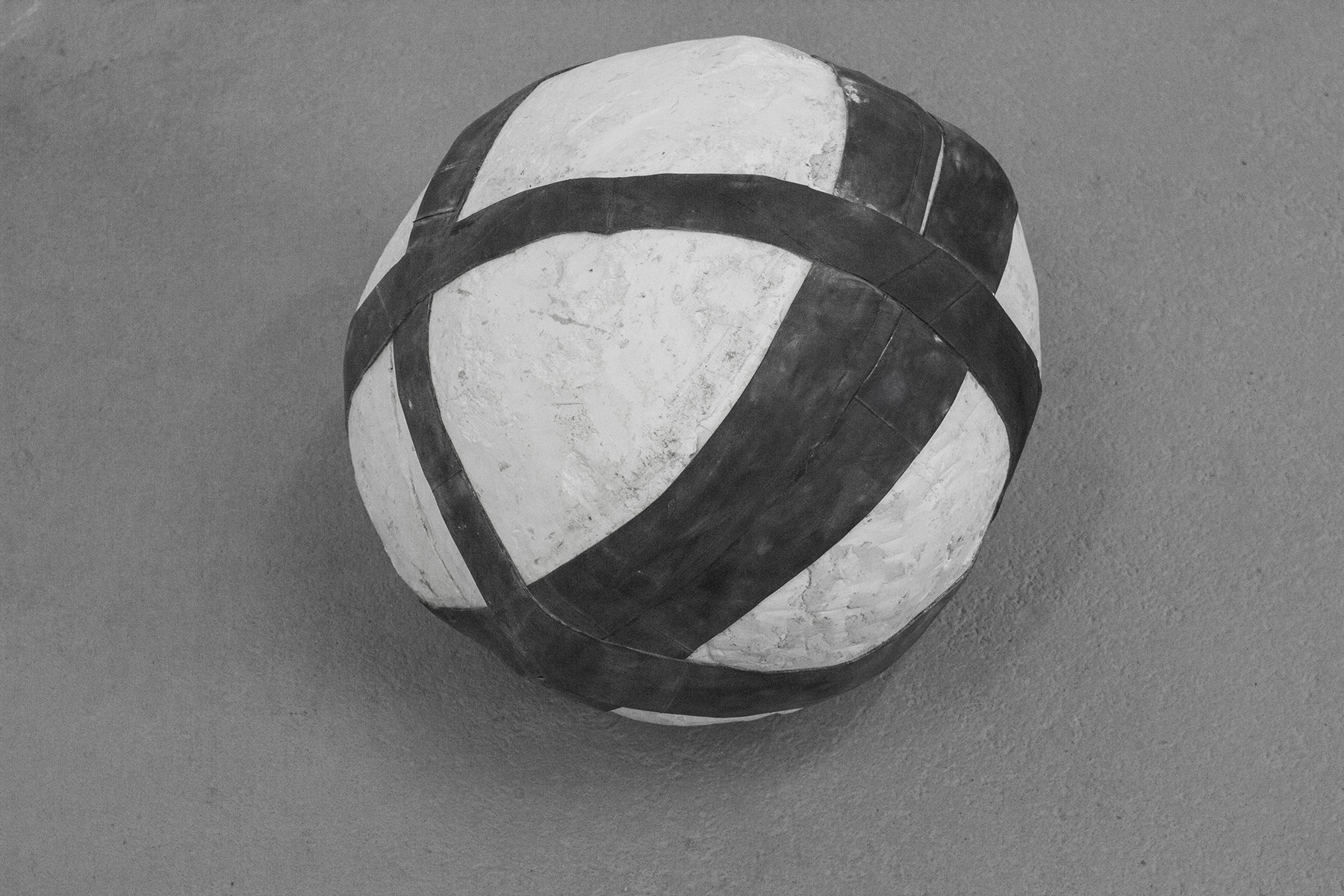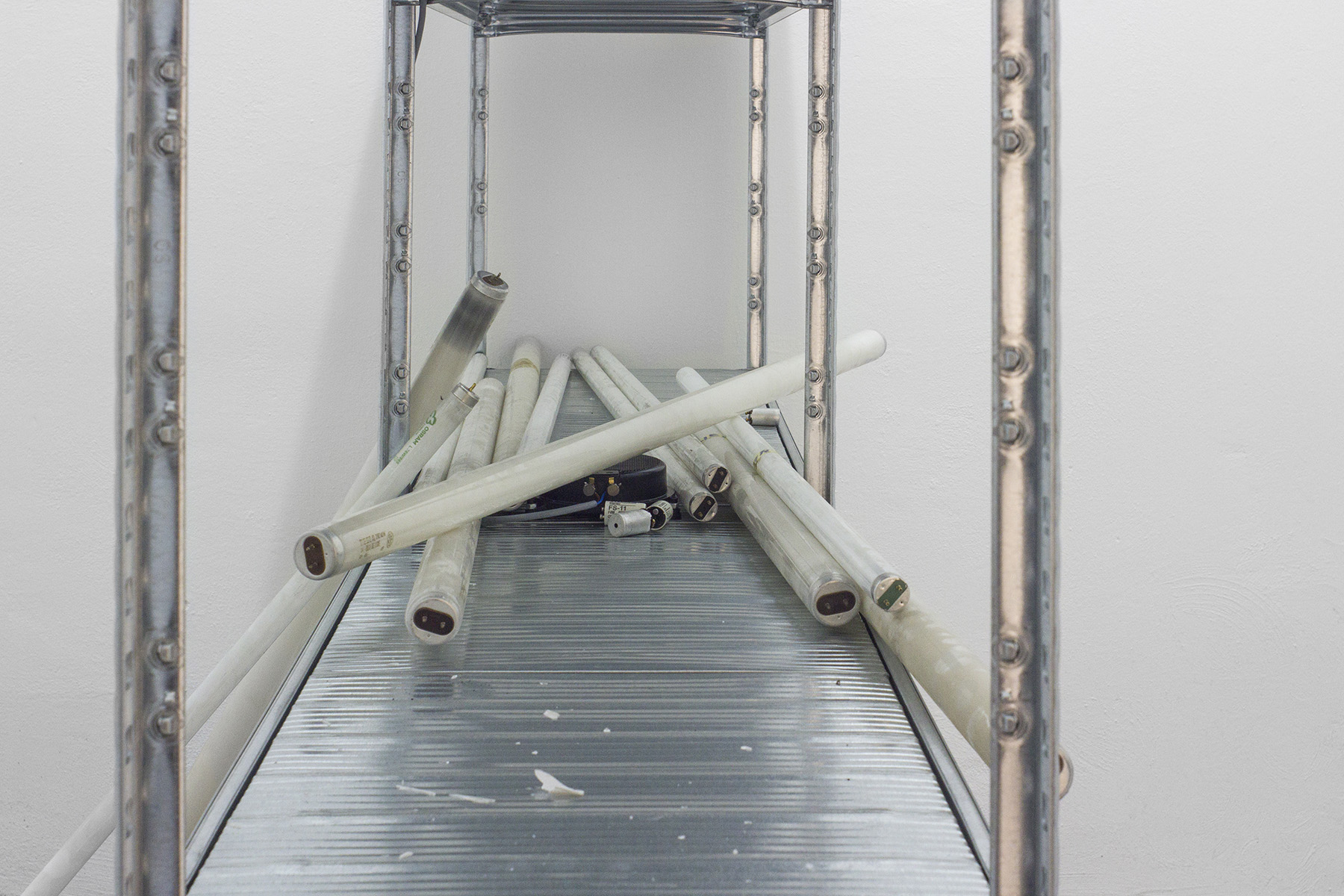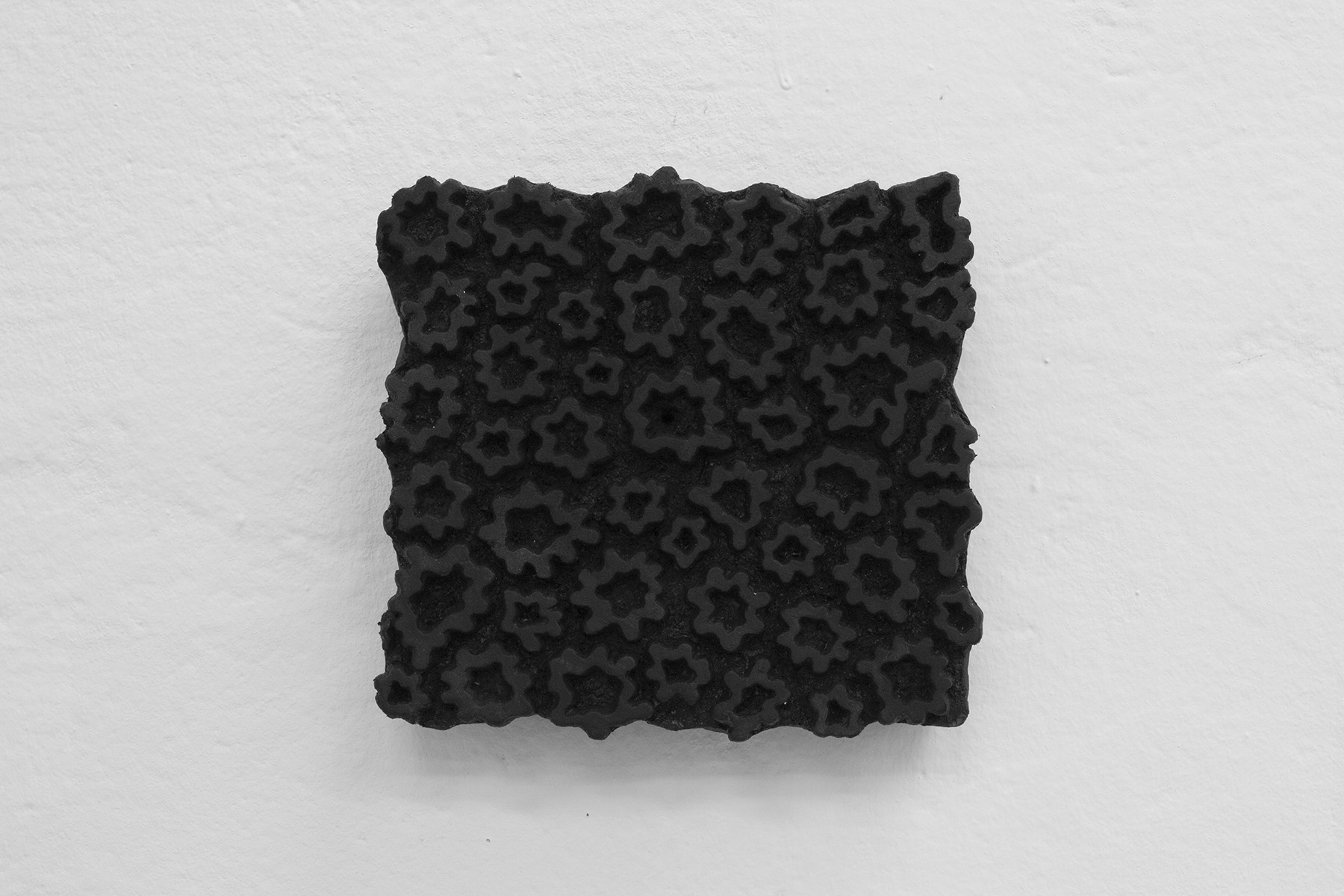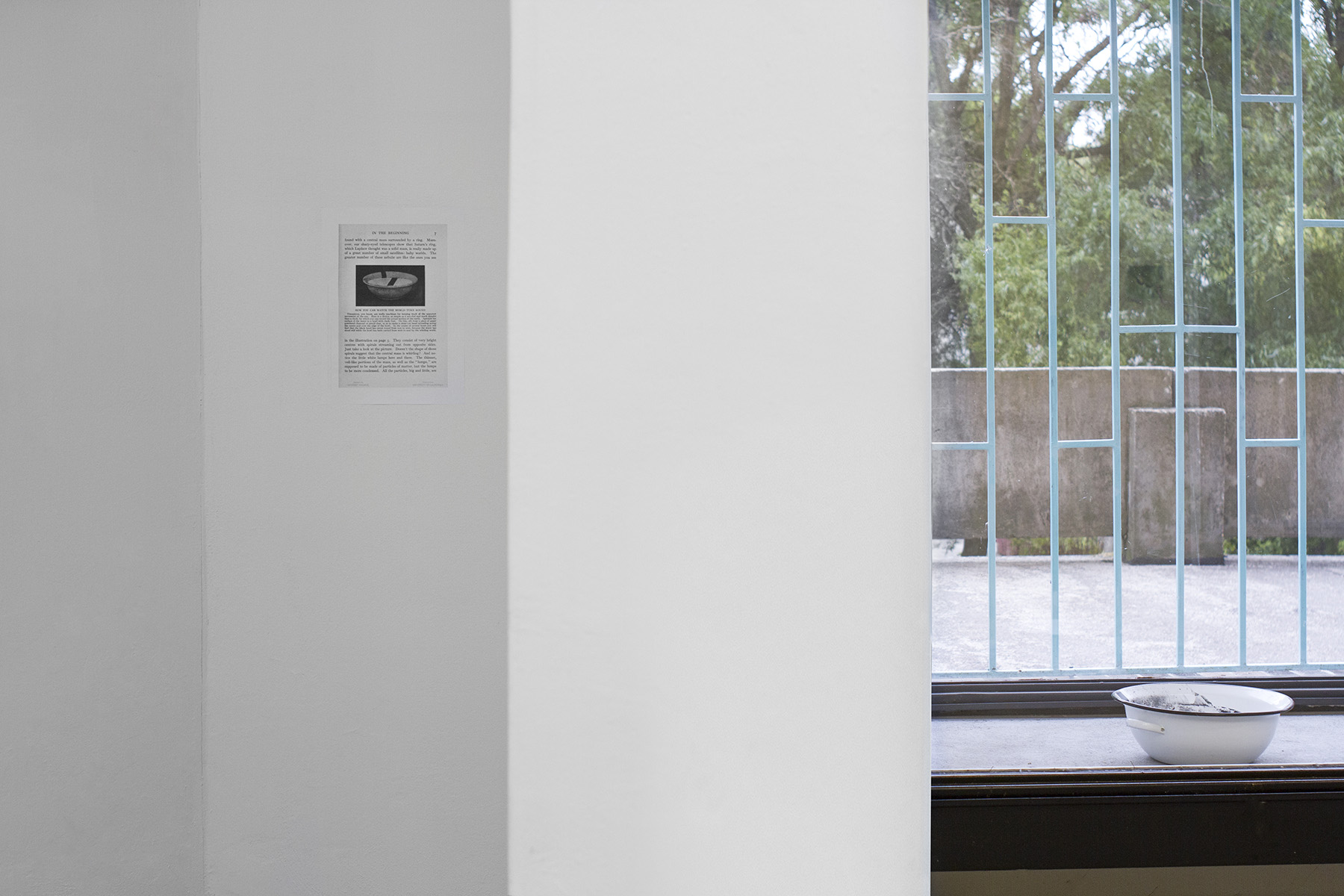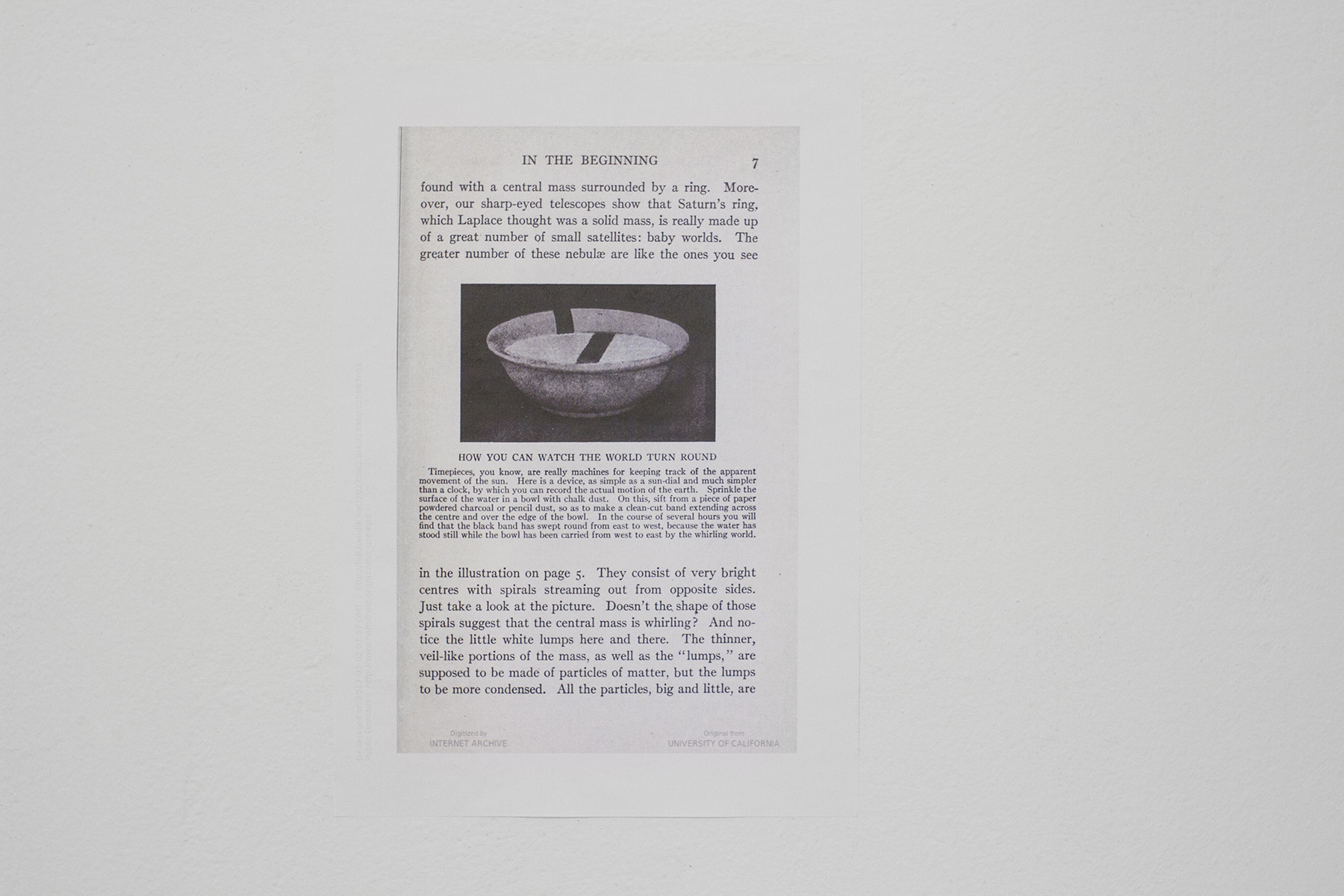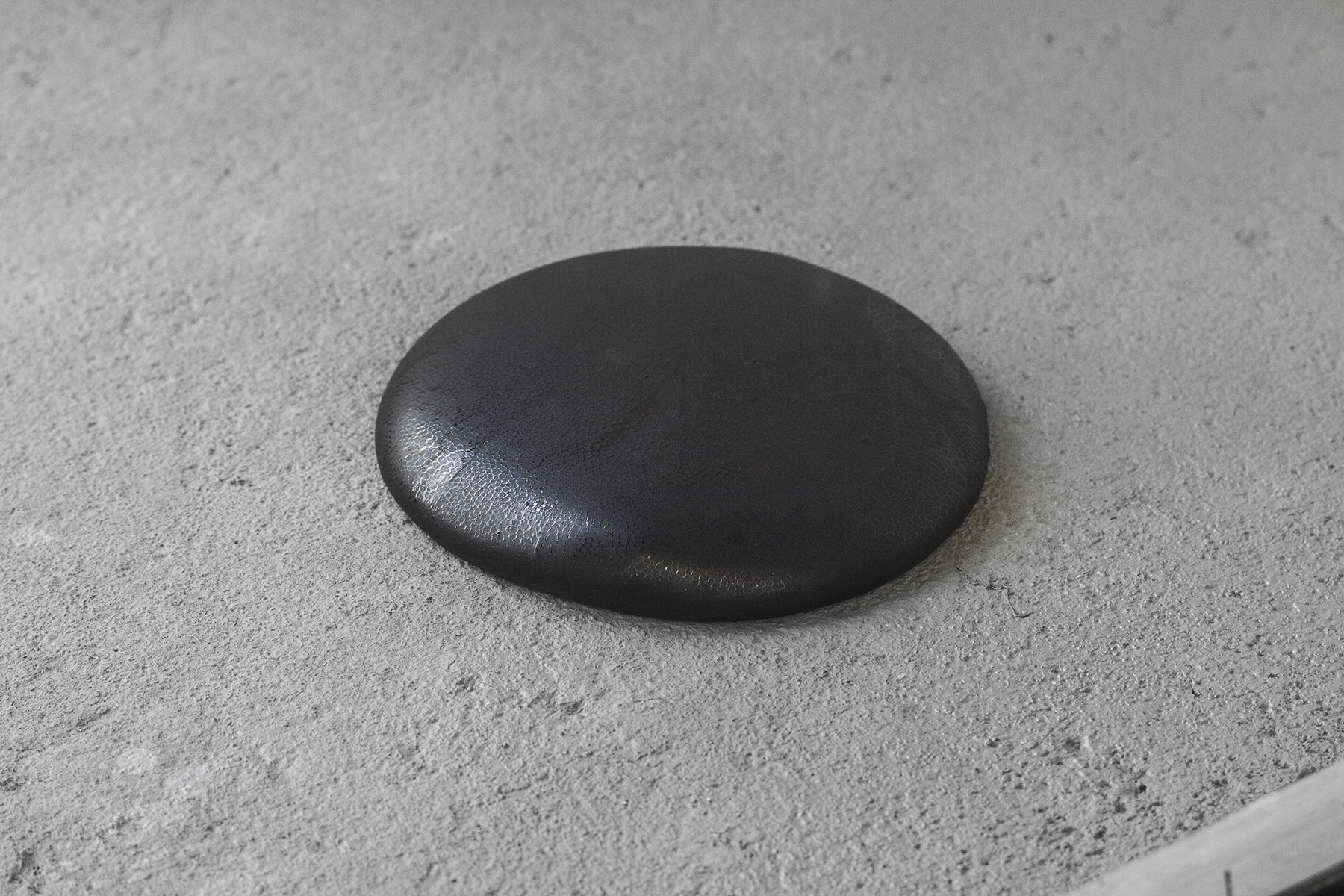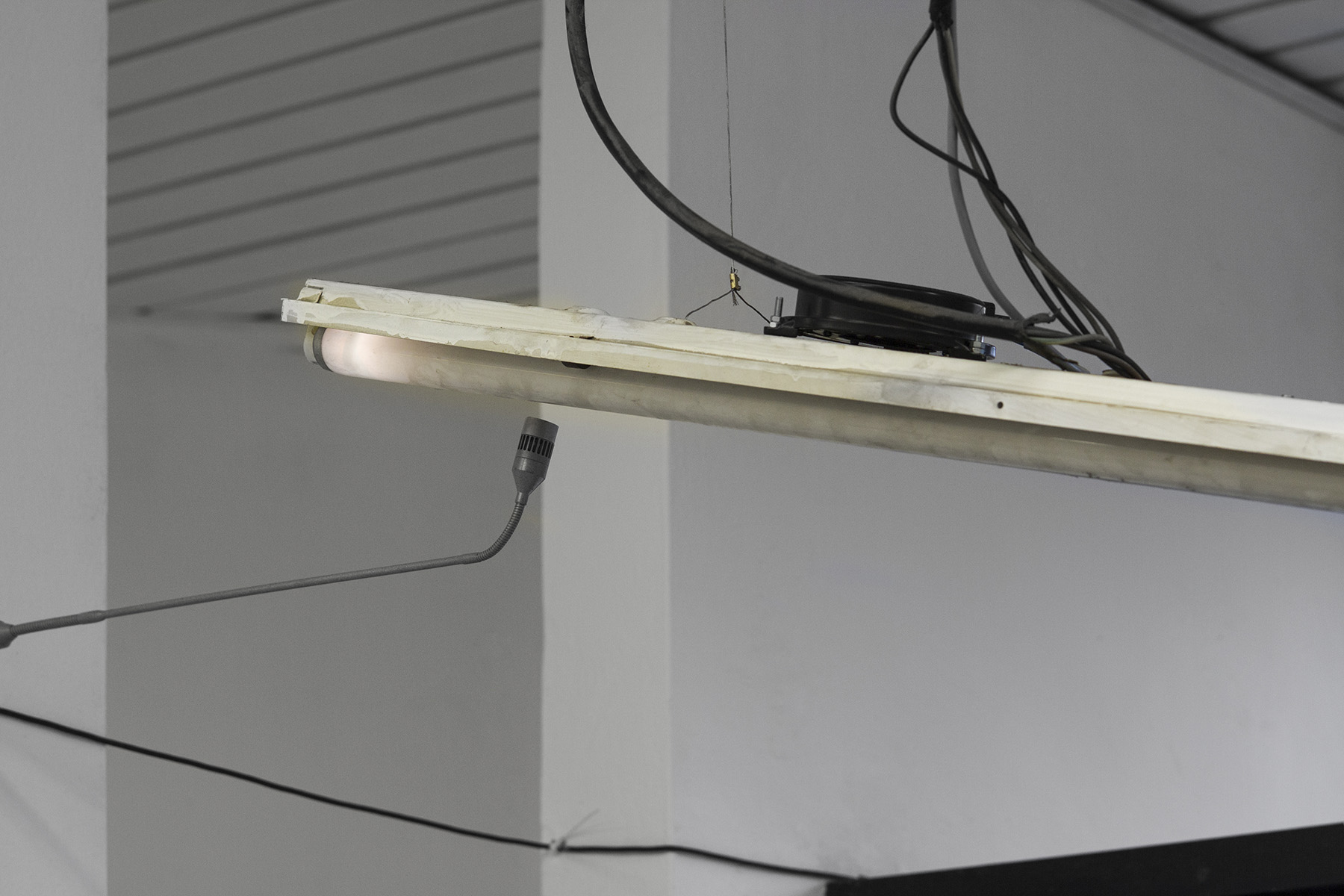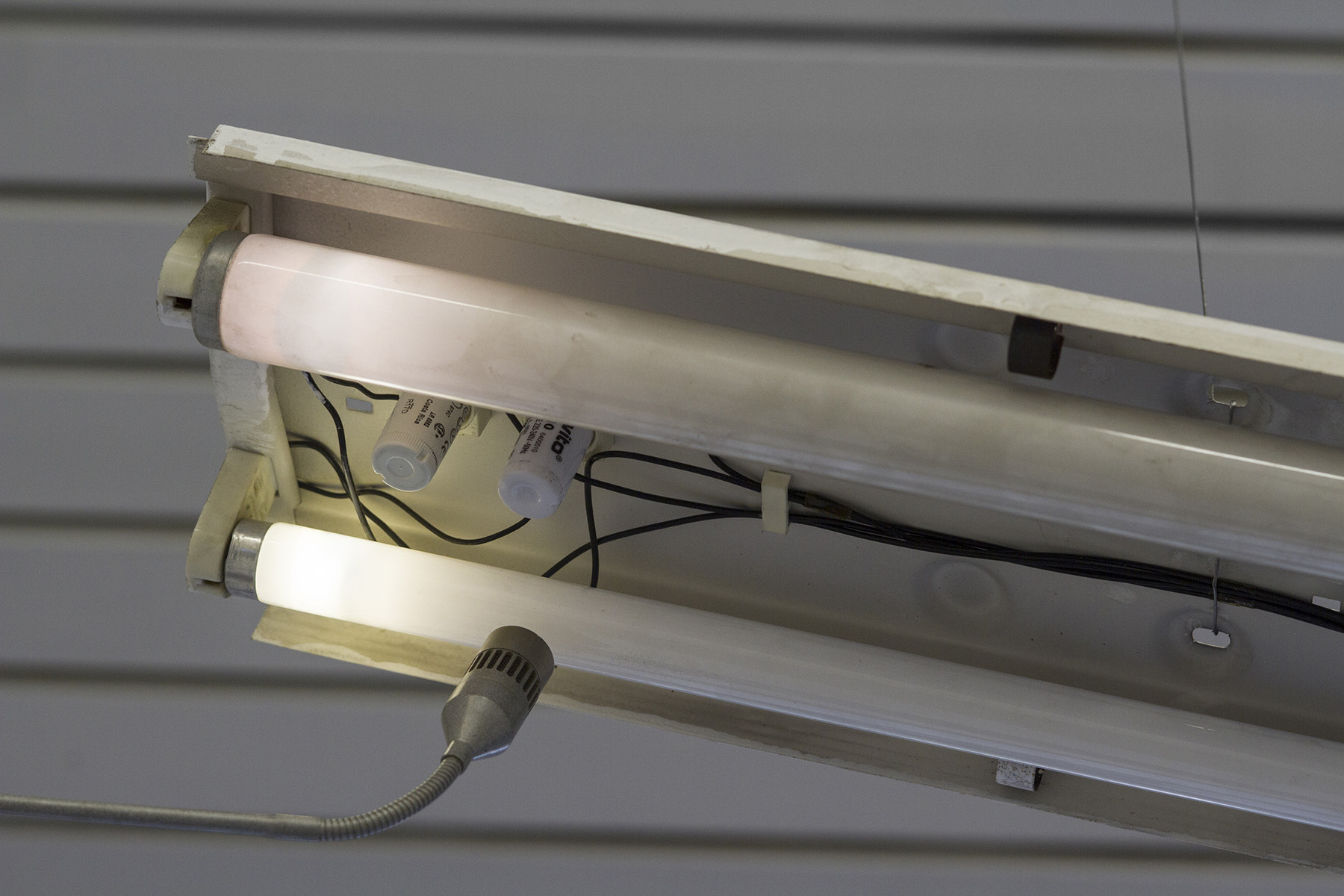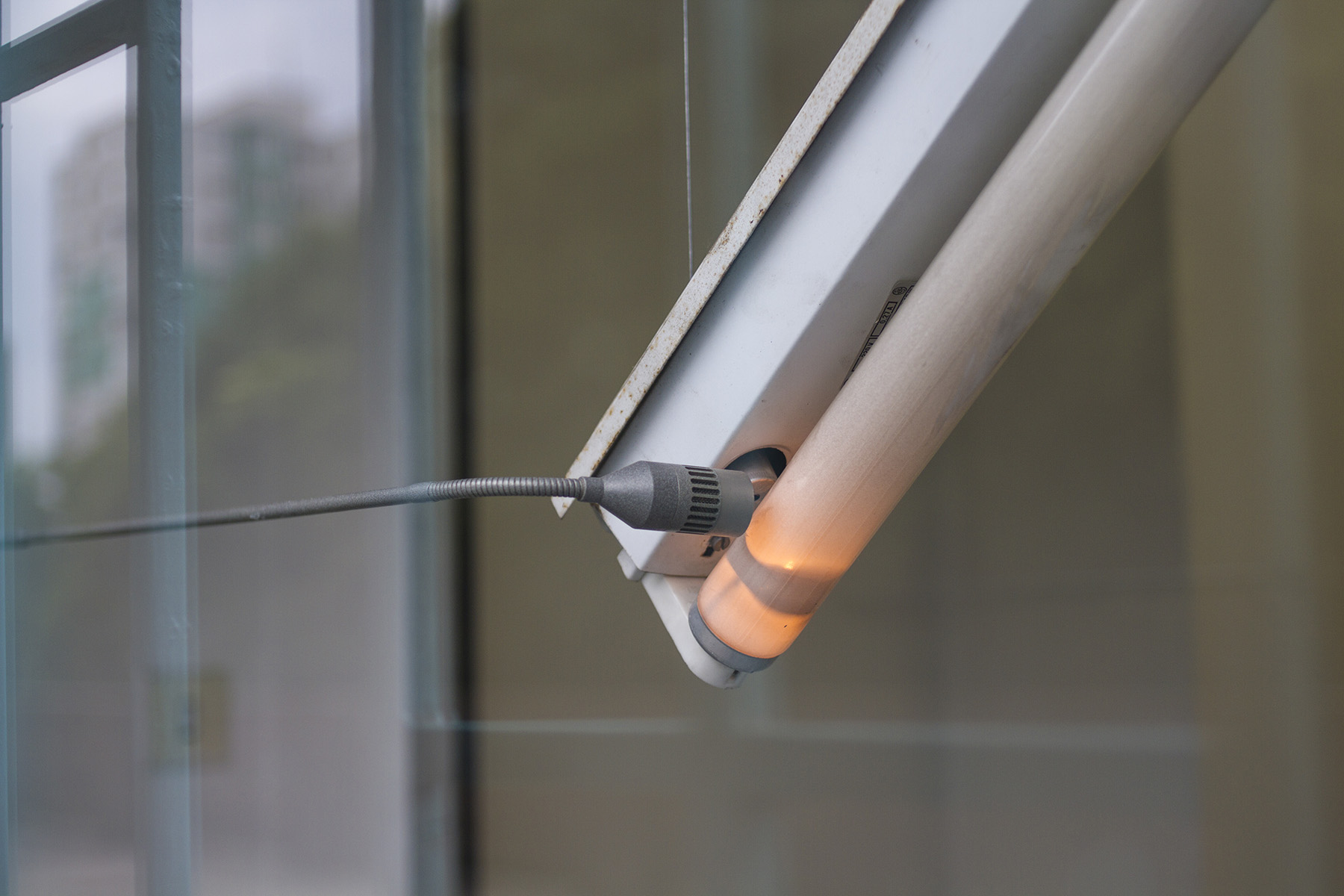Artists: Ján Gašparovič & Matej Gavula
Venue: Hotdock Project Space
Curator: Andrej Kabal
Photo: Leontína Berková
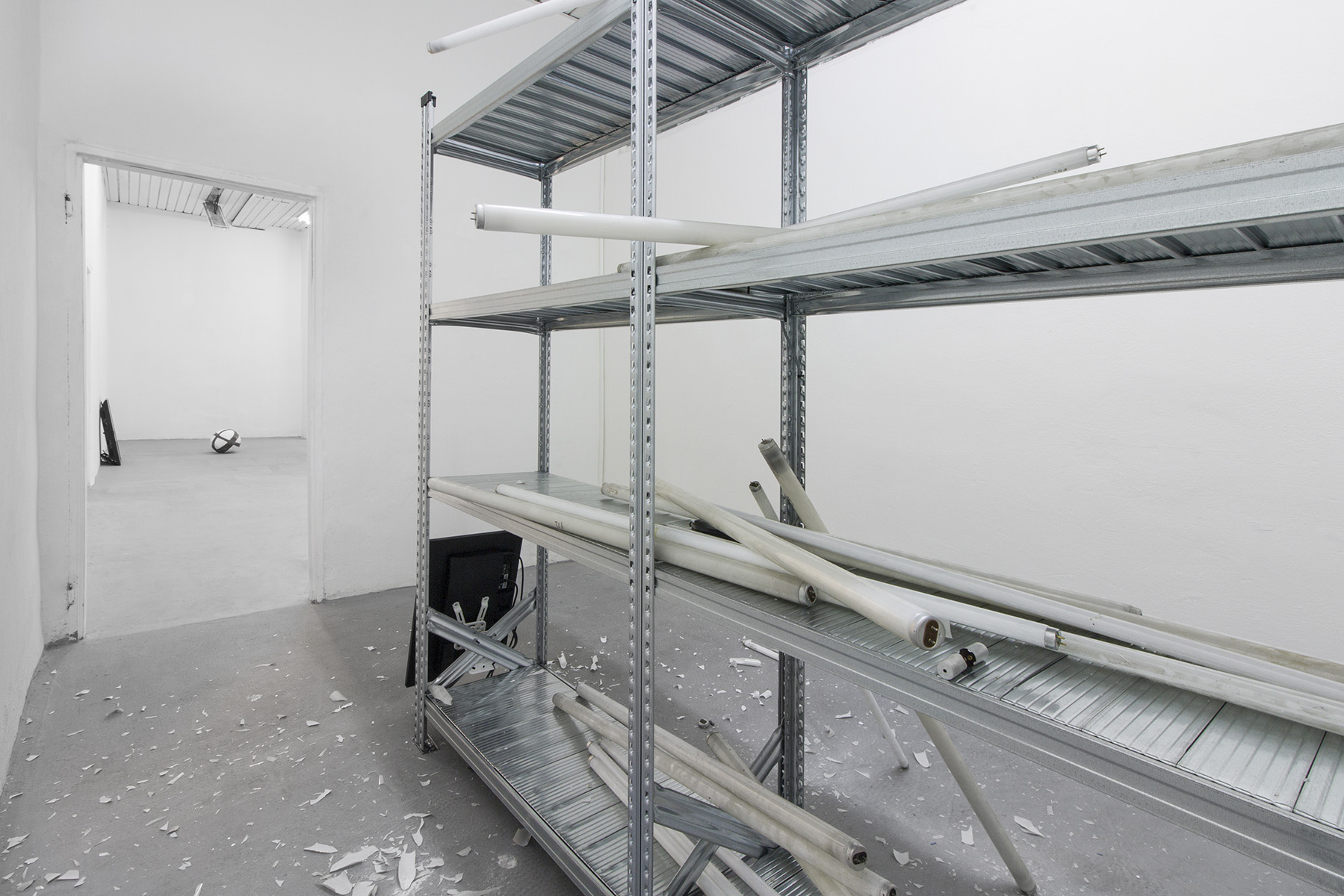
There are things among us which are there even though we cannot see them. I am not referring to a children’s game of pretending to be invisible once you close your eyes, or plainclothes policemen at parties in our favorite clubs. I am speaking of phenomena which do in fact exist outside of the plane of abstraction and imagination, are caused primarily by nature and its inherent laws. They fill up space, act on our bodies and sometimes even create, as their unintentional byproduct, shapes and patterns. This lack of intention does not matter at all; there are many things in the world which were once considered undesirable, only to become valued later – such as the originally unwanted distortion of amplified guitar sound that later gave rise to hard rock music.
Jano Gašparovič this time decided to look for this value in sound that cannot be heard by human ears, but is still perceived by our bodies, is present among us, vibrates and dances in space. The frequencies between 16 and 20 Hz cannot be distinguished by our imperfect hearing, yet they are physically present in their oscillations. Jano has already worked with invisible physical phenomena in his previous exhibitions and installations, his most recent work in Brno focused on sounds whose frequencies can induce earthquakes. His dedication to unseen phenomena is reflected even in his transparent glasses that try to make it seem as if they’re not really there even though in this case we can in fact see them.
This time however, odds are stacked in Jano’s favor. Using various software and hardware technological means, the space of the HotDock gallery will be filled up with invisible vibrations. What can we expect of this experiment of Vernean stature? Will the low frequencies open a gate to an alternative dimension where Gašparovič’s glasses aren’t transparent and the minister of culture is Satan himself? Will the visitors of the gallery have their stomachs turned upside down, resulting in a group explosion the kinds of which are not referred to directly in decent circles? Or will, God forbid, the low frequency oscillations result in shaking of champagne glasses, so that one will only be able to drink Prosecco from plastic cups, oh the blasphemy?
We cannot as yet provide answers to these undoubtedly important questions, the whole experiment s for now a speculation that is not guaranteed to work out at all. The greater the turnout, however, the more data can be fed back into the exhibitions, turning it into an acoustically unique spot. The seemingly empty space of the gallery will in this way be filled up to its furthest corners by entities unseen by the eye, which can nevertheless make objects and bodies of the audience vibrate.
Matej Gavula tackles this phenomenon in his installation, too. His penchant for physical laws and natural phenomena will be represented by a piece of wood which he brought over from Rajasthan 15 years ago. Its crevices and its structure is where Matej strives to find rhythm and vibration, created by nature, resulting in an object that naturally extends beyond its original aesthetic domains. It is very hard to fight the grandeur of time, but given enough space, something is bound to happen.
Matej attempted to demonstrate the movement of Earth by using directions found in a hundred years old book. The object does not work at all, but that is of course no matter. The important thing here is to show to the audience how the natural phenomena in question work, and to visualize them. The whole exhibition in the panel housing estate located HotDock gallery aims to be a test of an overlap between art and panel, art and the whimsical abstraction of nature. The apparent emptiness Of the gallery will be set in oscillation by patterns and frequencies, present, yet still invisible to eye.
Is the whole undertaking about feelings only? Surely not. It is intended as an equivalent of an aesthetic square and compasses, somewhere between the symbol of freemasonry and a working tool used to create mathematically exact objects.
